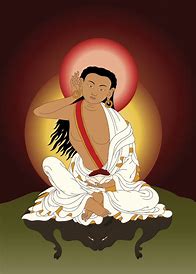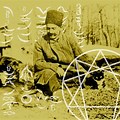Muhammad Muhammad was a prophet and founder of Islam.
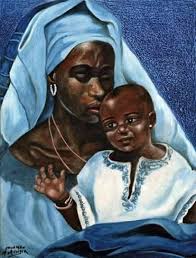










Muhammad
Muhammad was a prophet and founder of Islam.
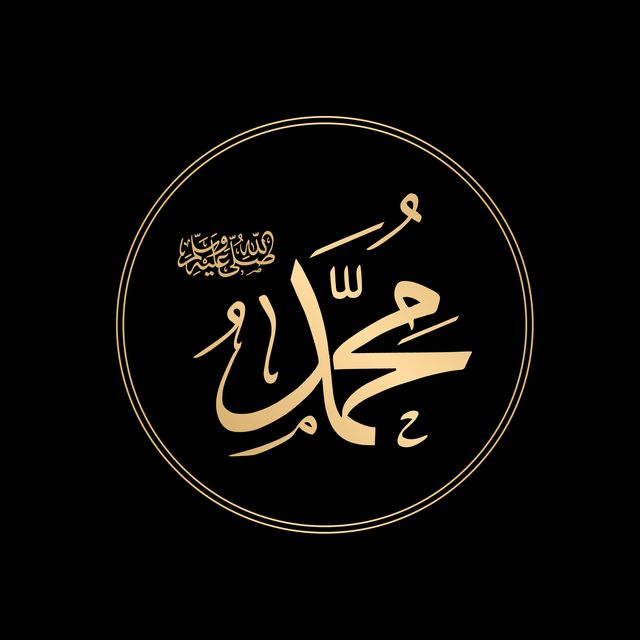
Who Was Muhammad?
Muhammad was the prophet and founder of Islam. Most of his early life was spent as a merchant. At age 40, he began to have revelations from Allah that became the basis for the Koran and the foundation of Islam. By 630 he had unified most of Arabia under a single religion. As of 2015, there are over 1.8 billion Muslims in the world who profess, “There is no God but Allah, and Muhammad is his prophet.”
Quick Facts
FULL NAME: Muhammad ibn Abdullah ibn Abd al-Muttalib ibn Hashim
BORN: c. 570
BIRTHPLACE: Makkah, Saudi Arabia
DEATH: June 8, 623
The Life of Muhammad
Muhammad was born around 570, AD in Mecca (now in Saudi Arabia). His father died before he was born and he was raised first by his grandfather and then his uncle. He belonged to a poor but respectable family of the Quraysh tribe. The family was active in Meccan politics and trade.
In his early teens, Muhammad worked in a camel caravan, following in the footsteps of many people his age, born of meager wealth. Working for his uncle, he gained experience in commercial trade traveling to Syria and eventually from the Mediterranean Sea to the Indian Ocean. In time, Muhammad earned a reputation as honest and sincere, acquiring the nickname “al-Amin” meaning faithful or trustworthy.
In his early 20s, Muhammad began working for a wealthy merchant woman named Khadijah, 15 years his senior. She soon became attracted to this young, accomplished man and proposed marriage. He accepted and over the years the happy union brought several children. Not all lived to adulthood, but one, Fatima, would marry Muhammad’s cousin, Ali ibn Abi Talib, whom Shi’ite Muslims regard as Muhammad’s successor.
The Prophet Muhammad
Muhammad was also very religious, occasionally taking journeys of devotion to sacred sites near Mecca. On one of his pilgrimages in 610, he was meditating in a cave on Mount Jabal aI-Nour. The Angel Gabriel appeared and relayed the word of God: “Recite in the name of your Lord who creates, creates man from a clot! Recite for your lord is most generous….”
These words became the opening verses of sūrah (chapter) 96 of the Qur'an. Most Islamic historians believe Muhammad was initially disturbed by the revelations and that he didn’t reveal them publicly for several years. However, Shi’a tradition states he welcomed the message from the Angel Gabriel and was deeply inspired to share his experience with other potential believers.
Islamic tradition holds that the first persons to believe were his wife, Khadija and his close friend Abu Bakr (regarded as the successor to Muhammad by Sunni Muslims). Soon, Muhammad began to gather a small following, initially encountering no opposition. Most people in Mecca either ignored him or mocked him as just another prophet. However, when his message condemned idol worship and polytheism, many of Mecca’s tribal leaders began to see Muhammad and his message as a threat.
Besides going against long standing beliefs, the condemnation of idol worship had economic consequences for merchants who catered to the thousands of pilgrims who came to Mecca every year. This was especially true for members of Muhammad’s own tribe, the Quraysh, who were the guardians of the Kaaba. Sensing a threat, Mecca’s merchants and leaders offered Muhammad incentives to abandon his preaching, but he refused.
Increasingly, the resistance to Muhammed and his followers grew and they were eventually forced to emigrate from Mecca to Medina, a city 260 miles to the north in 622. This event marks the beginning of the Muslim calendar. There Muhammad was instrumental in bringing an end to a civil war raging amongst several of the city’s tribes. Muhammad settled in Medina, building his Muslim community and gradually gathering acceptance and more followers.
Between 624 and 628, the Muslims were involved in a series of battles for their survival. In the final major confrontation, The Battle of the Trench and Siege of Medina, Muhammad and his followers prevailed and a treaty was signed. The treaty was broken by the Meccan allies a year later. By now, Muhammad had plenty of forces and the balance of power had shifted away from the Meccan leaders to him.
In 630, the Muslim army marched into Mecca, taking the city with minimum casualties. Muhammad gave amnesty to many of the Meccan leaders who had opposed him and pardoned many others. Most of the Meccan population converted to Islam. Muhammad and his followers then proceeded to destroy all of the statues of pagan gods in and around the Kaaba.
The Death of Muhammad
After the conflict with Mecca was finally settled, Muhammad took his first true Islamic pilgrimage to that city and in March, 632, he delivered his last sermon at Mount Arafat. Upon his return to Medina to his wife’s home, he fell ill for several days. He died on June 8, 632, at the age of 62, and was buried at al-Masjid an-Nabawi (the Mosque of the Prophet) one of the first mosques built by Muhammad in Medina.
Reference: By Biography.com Editors and Greg Timmons
World Day of the Poor – SVP Christmas Campaign 2024
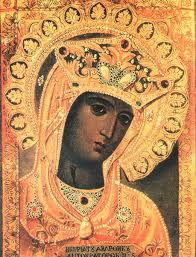










World Day of the Poor – SVP Christmas Campaign 2024
In Matthew 26:11 Jesus tells his disciples “you will always have the Poor, you will not only have me”
It is important to consider where this sits in the Gospel, at the tail end of the previous chapter we have seen a reframing of the Poor, “whatever you do for the least of these children of mine you do for me” (Mt. 25:40) and is framed in the context of Jesus imminent betrayal, arrest, crucifixion, death and crucially resurrection.
Soon we will reflect on what this scripture tells us as Christians? As Disciples? As Vincentians? In light of this World Day of the Poor.
First we must rule out what the world might have us believe… “You will always have the Poor” could smack of futility. Any effort to alleviate the suffering of our neighbours will be fleeting, insufficient and at best temporary, systems will not change and inhumanity will always trump humanity. Why should we bother? Would it not be better to be glad for our lot in life and indeed celebrate the comforts we are afforded above others? Without hope, joy and purpose these words are an excuse for inaction.
As Christians what must we hear?, we often pray the Lords own prayer which contains the line “on earth as it is in Heaven”, we aspire to make our lived days as heavenly as it is possible to, when we encounter poverty and its hallmarks, dependence and distraction with the worlds quick solutions, purposelessness, hopelessness, numbness and a lack of life. Where we as Christians see poverty we ought to hear a calling to make it has Heaven albeit on earth. To recognise Christ in that situation, carried by us and met “by the least of these children of mine”. To the Christian that scripture must give us purpose and direction.
As Disciples what must we hear? Consider some of the other moments witnessed by the disciples where impossible need was noticed, responded to and miraculously met. The disciples remember the feeding of five thousand with meagre donations, the redemption of sins matched with the curing of ailments, the disciples have worked to bring those hurt by the world to Christ and this Mission does not change. We are the stewards at the wedding feast, the friends who carry a paralytic man through the crowds, we cooperate with God for our miracles we are not supposed to work them ourselves. To the Disciple that scripture must give us permission to act without being capable of miracles.
As Vincentians what must we hear? Vincent and all of our saints inspired by him, we have a Society which is shaped by the need it caters to. A Society which is constantly evolving, constantly organising, constantly reshaping and constantly giving and constantly growing. To the Vincentian that scripture must give us cause to recognise, reflect and respond.
You will always have the Poor and that poverty is constantly evolving, we must embrace the materially poor, the socially poor, the health poor, the purpose poor and many many more.
We must also recognise that poverty in ourselves and seek to find it in the Church and our Conferences, have we made our corner of Earth feel like Heaven yet?
Director for Membership, Jon Cornwall : Reference: St Vincent De Paul Society
Pope Francis to open 5 sacred portals on Christmas Eve — for a ritual that’s never been done before
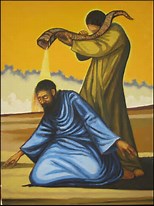








Pope Francis to open 5 sacred portals on Christmas Eve — for a ritual that’s never been done before
Pope Francis will commence a centuries-long Catholic tradition on Christmas Eve and introduce a first-time, historical addition to the holy ritual.
Starting on Dec. 24, the pontiff will open a series of five Holy Doors throughout the Vatican, including St. Peter’s Basilica, plus Rome’s three other basilicas to commence next year’s Catholic Church jubilee — a joyful commemoration of faith that normally occurs every 25 years.
The door at St. Peter’s was sealed shut by a wall of bricks since the Jubilee Year of Divine Mercy in 2016 and, on Dec. 2, those were ripped down to ready the door for opening as part of the rite of “recognition.”
After that Christmas Eve ritual, Pope Francis will open a symbolic door inside the Roman prison Rebibbia on Dec. 26, the feast of St. Stephen.
“I think of prisoners who, deprived of their freedom, daily feel the harshness of detention and its restrictions, lack of affection, and, in more than a few cases, lack of respect,” Pope Francis said.
“In order to offer prisoners a concrete sign of closeness, I would myself like to open a Holy Door in a prison, as a sign inviting prisoners to look to the future with hope and a renewed sense of confidence.”
The objective of opening the doors later this month is to usher in a year “renewed in hope” as Christians find Christ as the “door of our salvation,” Pope Francis wrote in a proclamation, or “bull of indication,” for the 2025 year-long celebration.
“God’s word helps us find reasons for that hope,” he added. “In the heart of each person, hope dwells as the desire and expectation of good things to come, despite our not knowing what the future may bring.”
On Sunday, Dec. 29, Pope Francis will open the Holy Door at Rome’s Basilica Saint John Lateran, of which he is also the bishop.
Then, on New Year’s Day — also a holy day of obligation, the Solemnity of Mary — the Holy Door at the Papal Basilica of Saint Mary Major outside the Vatican in Rome will be opened.
Lastly, on Sunday, Jan. 5, Pope Francis will open the fifth and final Holy Door at the Papal Basilica of Saint Paul Outside the Walls in Rome.
The Catholic tradition of celebrating a jubilee began in the 1300s and was initially stretched out every 100 years rather than 25.
For centuries, the Holy Doors have been opened at the four Roman basilicas to usher in memorable years for the church.
In modern times, Pope John Paul II also celebrated a jubilee in 2000, at the time writing about the significance of the Holy Doors pertaining to one’s faith.122
By Alex Mitchell: New York Post:
The 144,000 in Revelation








The 144,000 in Revelation
Who are the 144,000 mentioned in Revelation 7 and 14? When are they chosen? Do they represent the Church today? Is salvation limited to this special group?
The 144,000 in Revelation 7 and Revelation 14
The book of Revelation has three references to a group of people numbering 144,000.
Revelation 7:4 says, “One hundred and forty-four thousand of all the tribes of the children of Israel were sealed.” Of this group, 12,000 came from each tribe with the exception of the tribe of Dan (verses 5-8). Why Dan is not included is a matter of conjecture.
Revelation 14:1 speaks of “one hundred and forty-four thousand” standing with a Lamb on Mount Zion and having the name of God “written on their foreheads.”
The third reference describes this group singing before God and states that “no one could learn that song except the hundred and forty-four thousand who were redeemed from the earth” (verse 3).
To understand who these people are, we need to answer a few basic questions.
When are the 144,000 sealed?
The first reference to this group of people in the book of Revelation comes after six seals have been opened, each bringing misery and destruction to earth’s inhabitants. These include four horses (representing false prophets, war, famine and pestilence) followed by a religious inquisition, resulting in the deaths of faithful Christians, and heavenly signs. (For further study on the seals of the book of Revelation, read our article on the “Seven Seals.”)
These events, which will come because of mankind’s misrule and Satan’s efforts to destroy humanity, were prophesied by Christ during His Olivet Prophecy.
In this teaching about the future, Jesus described this time as one of “great tribulation, such as has not been since the beginning of the world until this time, no, nor ever shall be. And unless those days were shortened, no flesh would be saved; but for the elect’s sake those days will be shortened” (Matthew 24:21-22).
After this time of Great Tribulation orchestrated by Satan and misguided humans comes the punishment of God called “the wrath of the Lamb” and “the great day of His wrath” (Revelation 6:16-17).
The sealing of the 144,000 takes place after the Tribulation and prior to the wrath of God. As the following chapter explains, the four angels that are poised to bring punishment to the earth from God are told not to harm the earth until this group of people has been sealed (Revelation 7:1-3).
These passages show that the 144,000 will be people who survive the Great Tribulation. They are not faithful saints who have lived and died throughout the previous ages.
What is the spiritual state of the 144,000?
The 144,000 will be people who have been faithful to God. They are called “the servants of our God” (Revelation 7:3), ones “who were not defiled with women, for they are virgins [meaning, they are spiritually pure]. These are the ones who follow the Lamb wherever He goes. These were redeemed from among men, being firstfruits to God and to the Lamb” (Revelation 14:4).
The book of Revelation identifies those faithful to God as people who “keep the commandments of God” (Revelation 12:17; Revelation 14:12). The last chapter notes: “Blessed are those who do His commandments, that they may have the right to the tree of life, and may enter through the gates into the city” (Revelation 22:14). Unfortunately, many who claim to be Christians today do not keep all of God’s commandments. For additional study, see our articles on “Are the 10 Commandments Upheld in the New Testament?” and “Was the Sabbath Changed to Sunday?”
Are Church members today included in the 144,000?
Various churches and groups have claimed that their members or portions of their membership comprise the 144,000. Laying aside human claims, consider what the Bible says about when members of God’s Church are sealed compared to when the 144,000 will be sealed.
In Revelation 7:3 we previously noted that the angels were told not to harm the earth until the servants of God—the 144,000—had been sealed on their foreheads. A seal has the meaning of closing or sealing something up, such as a letter or a book. It also identifies or marks something as being genuine or approved. In Ezekiel 9:4 God told Ezekiel to put a mark on the foreheads of those who sighed and cried over the abominations committed within the city of Jerusalem. Whether this was a literal mark or symbolic because of the way these people thought, they were thus identified for God.
The New Testament also contains examples of people being marked or identified by God as genuine or the future recipients of a special blessing. John 6:27 speaks of Jesus, on whom “God the Father has set His seal on Him.”
Church “sealed with the Holy Spirit” now
Members of the Church are also sealed. Paul described members in Ephesus as people who, “having believed, … were sealed with the Holy Spirit of promise” (Ephesians 1:13). Later, he tells them, “And do not grieve the Holy Spirit of God, by whom you were sealed for the day of redemption” (Ephesians 4:30). Writing to members at Corinth, Paul spoke of Jesus Christ “who also has sealed us and given us the Spirit in our hearts as a guarantee” (2 Corinthians 1:22).
Those who are led by God’s Holy Spirit are thus sealed, marked or identified as being genuine Christians, children of God and heirs who will receive eternal life (Romans 8:14-16). This sealing takes place at baptism when one receives the Holy Spirit following repentance of his or her sins and immersion in water (Acts 2:38; Acts 19:6).
An important distinction to note is that members of God’s true Church are sealed by God for eternal life when they receive and are led by the Holy Spirit.
144,000 chosen and sealed during the Great Tribulation
It thus seems that the 144,000 will be people who, during the Tribulation, repent of their sins and dedicate their lives to God through faith and obedience in order to be sealed for salvation.
It thus seems that the 144,000 will be people who, during the Tribulation, repent of their sins and dedicate their lives to God through faith and obedience in order to be sealed for salvation.
Also note that the vision of the 144,000 singing before God’s throne in Revelation 14:1-3 occurs after these people have come through the Great Tribulation preceding Christ’s return and after they have been sealed and changed into spirit. It is not a vision of people currently in heaven as some mistakenly suppose.
Is salvation limited to only the 144,000?
Revelation 7 identifies the 144,000 as being 12,000 from each tribe of Israel with the exception of the tribe of Dan. Two significant points to note here include the fact that the descendants of the ancient nation of Israel are still important to God and that salvation is not limited to this group.
In addition to the 144,000, another innumerable multitude will likewise stand before God in “white robes” (Revelation 7:9, 13), symbolizing righteous living (Revelation 3:4-5).
This great multitude will include people from “all nations, tribes, peoples, and tongues [languages]” (Revelation 7:9). As they stand before the Lamb (Christ), a question is asked about who these people are and where they came from.
The answer is: “These are the ones who come out of the great tribulation, and washed their robes and made them white in the blood of the Lamb” (verse 14). Because of their response to God, they will serve “before the throne of God” (verse 15).
What is going to be the cause of so many people turning to God during the Tribulation?
The Bible reveals that two representatives of God called the “two witnesses” will prophesy on God’s behalf for 3½ years (Revelation 11:3). During all the turmoil and difficult circumstances that will accompany the Tribulation, the ministry of these servants of God will bring about the addition of many sons and daughters to God’s eternal family. These people will come from both the 144,000 and the innumerable multitude.
For further study, see “12 Tribes of Israel Today” and “Two Witnesses of Revelation 11.”
Reference: by David Treybig: Life: Hope & Truth:
Articles-Latest
- Koran burning conviction sparks fury as blasphemy law 'returns to UK'
- Robert Francis Prevost - Pope Leo XIV
- Pope Francis' death follows recent health challenges. Here's what we know about how he died.
- Easter April 2025 - international Celebrations
- The Rule of the twelve psalms -Worthy is the Lamb
- Religion in Africa Before Christianity and Islam
- 6 The Origin of Yahweh
- Dumo Di Milano
- What Did the Crow Tribe Believe In: Discover The Beliefs!
- 7 Reasons Historic Christianity Rejects the Book of Enoch
- 8 Breathtaking Mountain Monasteries Around the World
- Ethiopian Bible is oldest and most complete on earth
- Muhammad Muhammad was a prophet and founder of Islam.
- World Day of the Poor – SVP Christmas Campaign 2024
- Pope Francis to open 5 sacred portals on Christmas Eve — for a ritual that’s never been done before
- The 144,000 in Revelation
- Over 73 dead bodies 'used for meditation', 600 crocs in a pond, found in two Thai temples
- Occultism: Western Occult Tradition
- What is a Mudra
- Blood Sacrifices: Ancient Rituals of Life and Death
Articles-Most Read
- Home
- Let There Be Light
- Plants that feel and Speak
- The Singing Forest
- The Singing Forest-2
- Introduction
- Meditation
- Using Essential Oils for Spiritual Connection
- Heaven Scent
- Plants that Feel and Speak-2
- Purification
- Making the Spiritual Connection
- Anointing
- Essential Oils: The unseen Energies
- The Sanctity of Plants
- The Aroma Of Worship - Introduction
- The Aroma Of Worship-Foreward
- Methods Of Use
- Spiritual Blending
- Handling and Storage


